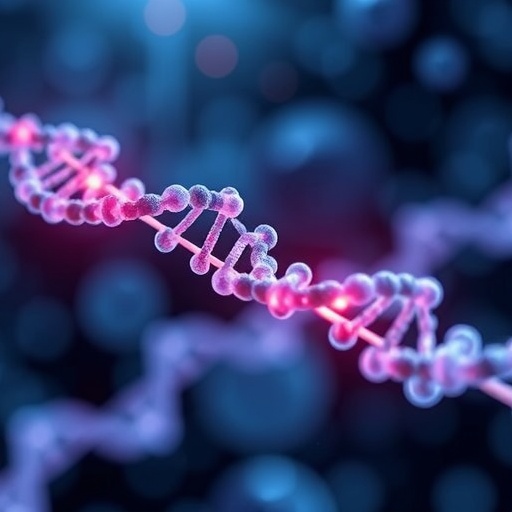
In a groundbreaking advancement poised to reshape the future of RNA therapeutics, researchers at the Massachusetts Institute of Technology have harnessed the power of artificial intelligence to revolutionize the design of lipid nanoparticles (LNPs). These nanoparticles, essential vehicles in the delivery of RNA vaccines and therapies, face ongoing challenges in optimizing their efficiency, specificity, and stability. MIT’s novel approach leverages a machine learning model inspired by cutting-edge transformer architectures to predict and create LNPs with superior delivery capabilities, potentially accelerating the development of next-generation vaccines and treatments for metabolic diseases.
Lipid nanoparticles serve as protective carriers for RNA molecules, shielding them from degradation within the bloodstream and facilitating their entry into target cells. Despite their critical role, optimizing LNP formulations has long been an arduous process given the complex interplay of lipid components that compose these particles. Conventional methods, reliant on combinatorial testing of various lipid mixtures, are both time-consuming and costly. To overcome this bottleneck, the MIT team developed a computational framework named COMET, a transformer-based neural network model that learns the intricate relationships among nanoparticle ingredients and predicts optimal compositions without the need for exhaustive empirical screening.
COMET’s design draws inspiration from the same artificial intelligence models that underlie sophisticated language processing systems such as ChatGPT. Rather than parsing words and grammar, COMET interprets how distinct chemical building blocks behave and interact within lipid nanoparticles. The transformers architecture endows the model with the ability to capture complex dependencies and non-linear interactions between multiple chemical components simultaneously, a task which traditional AI methods typically struggle with when applied to multi-component systems like LNPs.
.adsslot_tHoXYes4yO{width:728px !important;height:90px !important;}
@media(max-width:1199px){ .adsslot_tHoXYes4yO{width:468px !important;height:60px !important;}
}
@media(max-width:767px){ .adsslot_tHoXYes4yO{width:320px !important;height:50px !important;}
}
ADVERTISEMENT
To fuel this advanced learning capability, the researchers painstakingly compiled a rich dataset comprising approximately 3,000 unique lipid nanoparticle formulations. Each formulation varied systematically in its composition of four primary components: cholesterol, a helper lipid, an ionizable lipid, and polyethylene glycol (PEG)-conjugated lipid. The team evaluated the functional efficacy of each particle by measuring its ability to deliver messenger RNA (mRNA) encoding fluorescent proteins to cultured mouse skin cells. This extensive dataset provided the foundational knowledge necessary for COMET to discern the subtle yet critical influences of each component on nanoparticle performance.
Following the rigorous training phase, COMET demonstrated remarkable proficiency in forecasting novel LNP mixtures predicted to outperform those present in the initial dataset. Validation experiments confirmed that these AI-suggested nanoparticles delivered mRNA with greater efficiency, occasionally surpassing commercial formulations in potency. This success signifies a monumental leap forward in the rational design of nanoparticle-based delivery systems, heralding a new era of precision-engineered therapeutics.
The implications extend well beyond vaccine development alone. The MIT research team has leveraged this predictive platform to explore the inclusion of a fifth component—branched poly beta amino esters (PBAEs), a class of polymers known for their innate nucleic acid delivery capabilities. By integrating PBAEs into nanoparticle formulations, COMET was retrained with a supplementary dataset of approximately 300 LNPs containing this polymeric component. With this enriched modeling, the researchers could predict complex formulations that harness the synergistic effects of lipids and polymers to augment delivery efficiency further.
Moreover, the researchers customized their strategy to accommodate cellular specificity, a critical factor for targeted therapies. Harnessing COMET’s flexibility, they trained the model to predict LNP efficiency in delivering mRNA to distinct cell types. Using Caco-2 cells, derived from human colorectal adenocarcinoma and commonly employed as a model of the intestinal epithelium, they confirmed that the algorithm could effectively tailor nanoparticle formulations optimized for diverse biological environments. This adaptability opens doors to a wide array of therapeutic applications beyond systemic delivery, including oral vaccines and localized treatments.
Another pivotal advancement involved addressing the stability of lipid nanoparticles under lyophilization, or freeze-drying—a process commonly used to enhance the shelf life and ease of storage of pharmaceutical products. The durability of LNPs after lyophilization remains a significant challenge, frequently compromising their functional integrity. By incorporating freeze-drying performance into their training objectives, the MIT team used COMET to identify formulations that maintain nanoparticle efficacy post-lyophilization, simplifying logistics for distribution and global deployment of RNA therapies.
Giovanni Traverso, the principal investigator of the study and an associate professor at MIT, emphasized the transformative potential of this AI-driven design approach. By accelerating the identification of optimal nanoparticle formulations tailored to specific cells, delivery modes, and storage conditions, the platform promises not just speed but adaptability. This versatility is critical for rapid response to emerging pathogens and for personalization in metabolic disease treatment, including obesity and diabetes, fields targeted by ARPA-H-funded research projects.
The ongoing expansion of this platform seeks to integrate the prediction model with novel therapeutic payloads, such as GLP-1 mimetics—compounds that imitate the hormone glucagon-like peptide-1 and possess potent anti-diabetic and weight-loss properties. The coupling of optimized LNP carriers with such therapeutics could mark a paradigm shift in managing chronic diseases, transforming patient experiences by enabling oral RNA delivery methods that previously were unfeasible.
This research, formally published in the prestigious journal Nature Nanotechnology, reflects the fruitful intersection of molecular biology, materials science, and artificial intelligence. It exemplifies how transformer-based neural networks, primarily known for language understanding, can be ingeniously repurposed to unravel complex biochemical design spaces. The success of the COMET model underscores the vast potential of AI in overcoming long-standing barriers in drug delivery and precision medicine.
The advancement offers a glimpse into a future where the design of pharmaceutical nanoparticles can be algorithmically optimized to meet diverse clinical needs rapidly. RMIST-funded by institutions including the Koch Institute’s GO Nano Marble Center, the MIT Department of Mechanical Engineering, and healthcare partners such as Brigham and Women’s Hospital, this multidisciplinary work exemplifies collaborative innovation spanning computational and experimental domains.
As RNA-based therapeutics continue to expand their impact—from vaccines that thwart pandemics to gene therapies that treat metabolic diseases—the adoption of AI-driven design platforms like COMET will be crucial. This technology not only trims research timelines but elevates the quality and targeting of RNA delivery systems, making personalized medicine more accessible and impactful.
Subject of Research: Design and optimization of lipid nanoparticles for RNA delivery using artificial intelligence
Article Title: ‘Designing lipid nanoparticles using a transformer-based neural network’
News Publication Date: 15-Aug-2025
Web References: https://news.mit.edu/2024/mit-led-team-receives-funding-new-treatments-metabolic-disease-0205
References: Nature Nanotechnology (15-Aug-2025)
Keywords: Artificial intelligence, RNA, vaccine research, vaccine development, drug delivery, pharmaceuticals
Tags: AI in RNA vaccine developmentartificial intelligence in drug deliverycomputational models for LNP designinnovative approaches to vaccine formulationslipid nanoparticles optimizationmachine learning in healthcaremetabolic disease therapiesMIT RNA therapeutics researchnext-generation vaccine technologiesRNA therapeutics advancementsRNA vaccine delivery systemstransformer architecture in drug design





